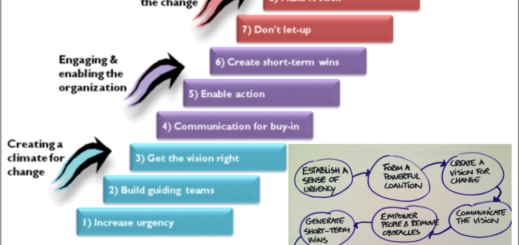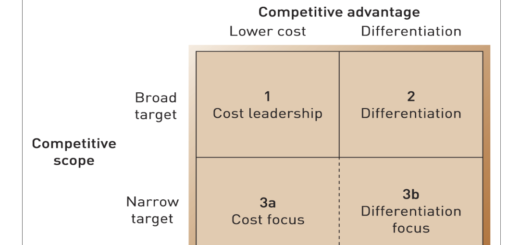“Partition to Provocation: The Enduring Conflict Between India and Pakistan”
Contents
Historical Roots, Strategic Rivalries, and Contemporary Controversies
The India-Pakistan conflict remains one of the most entrenched and volatile rivalries in modern international politics. Born out of the bloody partition of British India in 1947, the two nations have fought wars, engaged in nuclear brinkmanship, and continue to grapple over the disputed region of Jammu and Kashmir. This blog explores the historical evolution of this conflict, the emergence of nuclear deterrence, cross-border terrorism, and recent political controversies that continue to deepen hostilities.
Partition and the Kashmir Conundrum
The genesis of the India-Pakistan conflict lies in the partition of British India, a hurried and traumatic process that led to the creation of two dominions—India and Pakistan—based on religious lines. Amidst mass migrations and communal violence, the princely state of Jammu and Kashmir, a Muslim-majority region ruled by a Hindu monarch, became the epicenter of discord. The ruler’s decision to accede to India led to the first Indo-Pak war in 1947–48 and the eventual establishment of the Line of Control (LoC), but not a lasting resolution.
As noted by Das and Mukherjee (2024), this unresolved status has turned Kashmir into a “contested space” where both national identity and strategic calculations collide (Springer Link).
Wars and Nuclearization
India and Pakistan have fought four wars: 1947–48, 1965, 1971, and 1999 (Kargil). The 1971 war was particularly devastating for Pakistan, resulting in the creation of Bangladesh. These wars demonstrated both the deep-seated enmity and the strategic imbalance between the two nations. In response, Pakistan pursued nuclear weapons as an equalizer, culminating in nuclear tests in 1998 that mirrored India’s own tests.
The onset of nuclear deterrence, as analyzed by Hagerty (2020), has introduced both stability and instability. While large-scale wars may have been deterred, the safety net of nuclear weapons has arguably emboldened both sides to engage in conventional and sub-conventional warfare, especially in Kashmir (Springer Link).
Terrorism and Asymmetric Warfare
The post-Kargil era saw a sharp increase in asymmetric threats. Pakistan has been accused of harboring and supporting militant groups operating in Kashmir and other parts of India. High-profile attacks such as the 2001 Indian Parliament attack, the 2008 Mumbai attacks, and the 2019 Pulwama bombing escalated tensions, leading to cross-border strikes by India.
Zulfiqar Khan (2015) discusses how asymmetric threats like terrorism are now central to the conflict’s strategic calculus, complicating efforts at peace (KJIS Journal).
Major Controversies
1. Revocation of Article 370 (2019)
One of the most controversial recent developments was India’s abrogation of Article 370, which granted special autonomy to Jammu and Kashmir. This move was met with international concern and Pakistani condemnation, who viewed it as unilateral and destabilizing.
According to Aryal and Muneer (2025), this shift transformed the Kashmir dispute from a bilateral issue into one with broader geopolitical implications, particularly involving China (SAGE Publications).
2. Balakot Airstrikes
Following the Pulwama terror attack in 2019, India conducted airstrikes in Balakot, Pakistan, targeting a Jaish-e-Mohammed training camp. This marked a dramatic escalation as it breached Pakistani airspace, prompting a retaliatory aerial skirmish. The controversy over casualties and strategic success led to domestic political debates within India and international scrutiny.
3. Media and Narrative Warfare
The role of media in inflaming tensions is significant. Afshana and Din (2021) point out how both states manipulate media to frame the conflict and consolidate nationalist sentiment. Such narratives polarize public opinion and hinder reconciliation efforts (Springer Link).
Human Costs and Civilian Impact
Beyond military calculations, the conflict has inflicted a deep and persistent humanitarian crisis. Jammu and Kashmir remains heavily militarized, and its residents face recurring cycles of curfews, surveillance, and violence.
The conflict also contributes to economic diversion. Defense spending consumes a significant portion of national budgets in both countries, which could otherwise fund education, healthcare, and infrastructure.
Strategic Impasse and Global Concern
International actors have often attempted to mediate, but both India and Pakistan resist external involvement. The threat of nuclear war has made South Asia a “flashpoint” of global concern. Futter (2021) warns that sub-conventional conflict under a nuclear umbrella risks escalation beyond control (Springer Link).
Moreover, the involvement of non-state actors and the rise of hybrid warfare add new layers of complexity. Ali (2024) emphasizes how nuclear instability and insurgent groups create a volatile combination that could rapidly unravel (SAGE Journal).
Toward a Path of Reconciliation?
Despite deep-rooted hostilities, civil society and diplomatic channels continue to push for peace. Track-II dialogues, people-to-people exchanges, and economic cooperation have occasionally offered glimmers of hope.
Scholars like A Ranjan (2019) advocate for conflict transformation over resolution—focusing on building trust, normalizing relations, and creating interdependencies (Springer Link).
April–May 2025 Escalation: The Kashmir Massacre and Operation Sindoor
As of early May 2025, the India-Pakistan conflict has entered a new and dangerous phase following a terrorist attack in Kashmir on April 30, where at least 23 Indian and foreign tourists were killed in a coordinated assault at a Hindu pilgrimage site near Anantnag. India blamed the Pakistan-based group Lashkar-e-Taiba, prompting a swift and forceful military response.
On May 7, India launched “Operation Sindoor,” a series of airstrikes targeting what it described as terrorist training camps in Pakistani-administered Kashmir. According to CNN and NBC reports, this marks the most significant aerial incursion since the 2019 Balakot strikes. Pakistan has responded with heavy shelling across the Line of Control (LoC) and drone deployments, while Prime Minister Shehbaz Sharif vowed to “avenge every drop of blood” spilled in Indian attacks (CNN Live, NBC).
Al Jazeera and BBC confirm cross-border shelling, drone interceptions, and blackout zones in both Jammu and Pakistani Kashmir. Civilian casualties have already been reported on both sides.
Consequences and Strategic Fallout
The April–May 2025 escalation is significant for several reasons:
- Collapse of Peace Channels: Ongoing Track-II diplomacy, set to resume in mid-May, has been suspended indefinitely. Talks on border trade and religious pilgrimages have also been cancelled.
- Global Diplomatic Concern: The UN Security Council held an emergency session on May 8, 2025, urging restraint, while China and the U.S. have offered to mediate. However, both India and Pakistan continue to assert that Kashmir remains a bilateral matter.
- Nuclear Alert Readiness: Though not officially confirmed, regional analysts suggest both countries have put strategic forces on heightened alert, reviving fears of nuclear brinkmanship reminiscent of the 2001–02 standoff.
- Domestic Ramifications: Indian opposition parties have criticized the timing of the airstrikes, accusing the government of politicizing national security. In Pakistan, military commanders are reportedly under pressure from hawkish voices to retaliate more aggressively.
This recent escalation underscores the fragile nature of peace in South Asia. While deterrence may prevent full-scale war, it cannot eliminate the risks posed by non-state actors, miscalculation, and political posturing.
Conclusion
The India-Pakistan conflict remains one of the most entrenched disputes in the world, shaped by history, ideology, and strategic mistrust. While nuclear deterrence has prevented full-scale war, the potential for escalation—fueled by terrorism, nationalism, and unresolved territorial disputes—continues to endanger regional peace.
If there is to be a way forward, it lies in sustained dialogue, de-escalation, and public accountability. Any resolution must center not only on geopolitical interests but on the dignity, rights, and aspirations of the people who live in the shadow of this enduring rivalry.
📚 References
- Khan, Z. (2015). India-Pakistan: Emerging Trends in Strategic Dynamics. Korean Journal of International Studies. Link
- Blarel, N., & Ebert, H. (2018). Power, Territory, and Learning. Springer. Link
- Hagerty, D. T. (2020). Enhancing India-Pakistan Deterrence Stability. Springer. Link
- Aryal, S. K., & Muneer, S. (2025). Geopolitics and Kashmir Post-370. SAGE. Link
- Futter, A. (2021). Horizontal Proliferation Challenges. Springer. Link
- Ali, I. (2024). Nuclear Crisis Instability in South Asia. SAGE. Link
- Ranjan, A. (2019). Perceptions of Pakistan in India. Springer. Link
- Afshana, S., & Din, H. (2021). Media and Conflict in Kashmir. Springer. Link
- CNN. (2025, May 8). India launches attacks on Pakistan after Kashmir massacre.
https://www.cnn.com/world/live-news/india-pakistan-attack-kashmir-tourists-intl-hnk - NBC News. (2025, May 8). Pakistan vows retaliation after Indian airstrikes follow Kashmir attack.
https://www.nbcnews.com/world/asia/live-blog/india-pakistan-live-updates-pakistan-vows-retaliation-india-strikes-ka-rcna205280 - BBC News. (2025, May 8). India and Pakistan accuse each other of drone strikes as tensions mount.
https://www.bbc.com/news/live/cwyneele13qt - Al Jazeera. (2025, May 8). India-Pakistan live: Pakistan PM vows to ‘avenge’ victims of India’s attack.
https://www.aljazeera.com/news/liveblog/2025/5/8/india-pakistan-live-heavy-shelling-along-line-of-control-dividing-kashmir - Time Magazine. (2025, May 8). India-Pakistan Conflict Escalates: Latest Updates.
https://time.com/7283325/india-pakistan-attacks-kashmir - New York Times. (2025, May 7). India and Pakistan May Have an Off-Ramp After Their Clash. Will They Take It?
https://www.nytimes.com/2025/05/07/world/asia/india-pakistan-conflict.html - NPR. (2025, May 7). Tensions escalate as Pakistan calls India’s operation ‘an act of war’.
https://www.npr.org/2025/05/07/nx-s1-5389777/tensions-escalate-as-pakistan-calls-indias-operation-an-act-of-war - Reuters. (2025, May 6). Multiple loud explosions heard in Pakistani Kashmir – Reuters witness.
https://www.reuters.com/world/asia-pacific/multiple-loud-explosions-heard-pakistani-kashmir-reuters-witness-2025-05-06/




